#just the regular edition for the artbook tho
Explore tagged Tumblr posts
Text
Fortiche and Riot are really out here releasing both the season one boxset AND the art book in the same damn week like we're just going to be okay with that. I mean, I preordered both of them of course, but what the hell.
#just the regular edition for the artbook tho#i already got the CE for s1 i cannot afford the portfolio edition for the artbook#and i CERTAINLY could not afford the artifact edition so thank god it was already sold out so i didn't even have to feel remotely tempted#arcane#but oh my god between all this and the splatoon stuff like - hello? have mercy on me? i'm only one person? guys????#also THE BOOK OF BILL?? WHICH I COMPLETELY FORGOT I HAD PREORDERED??? ARRIVES AT MY HOUSE TOMORROW???? HELLO?????????????
6 notes
·
View notes
Note
You are always talking about merch so i wanted to know what merch do you have exactly? Sorry if this sounds too intrusive
Dw it’s oks! I like to show off my humble collections when I have the chance uwu
First I’ll go with my CDs since it what I collect more first one being the Smile limited edition album which comes in a nice little box, brings pretty MV postcards and a tarot card
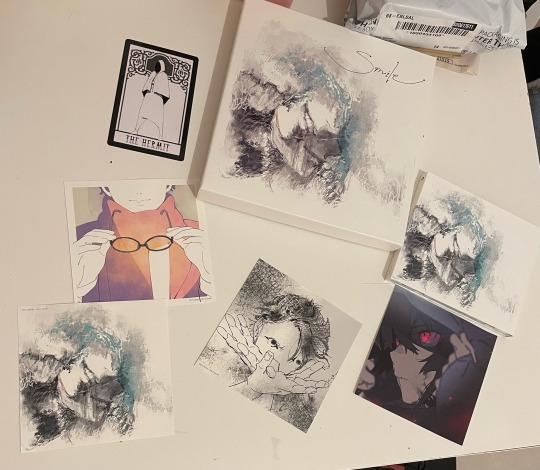
Next is the Kaikai Kitan/Ao no Waltz jjk edition album which comes with an extra CD with the live version of Leo and forbidden MVs that haven’t been released (tho I guess this one shouldn’t count as part of the collection since I’m on the process of selling it hmm). Then we have the Kaizin album it’s the regular edition so it doesn’t bring anything like the other editions BUT it brings a nice poster (since I preordered it) I just have to buy a frame for it
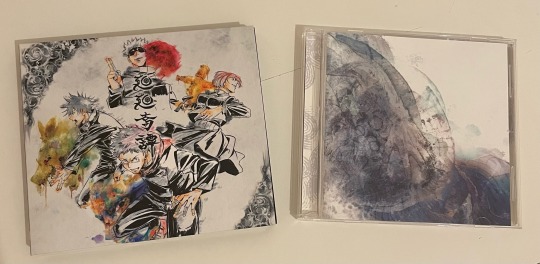
Next we have the InT CD people refused to believe existed and a BluRay with the live versions of Dramaturgy, Kaikai Kitan and Inochi no Tabekata, being honest with you I forgot how I got these

Then comes the Sou albums Utopia and Shinsou Kara. Utopia brings a mini card with Sou’s old avatar and a sticker of the Mr. Fixer MV, Shinsou Kara brings the Sou hugging eel card I love so much
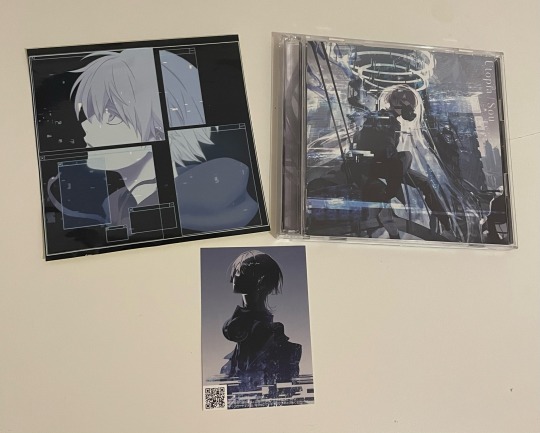
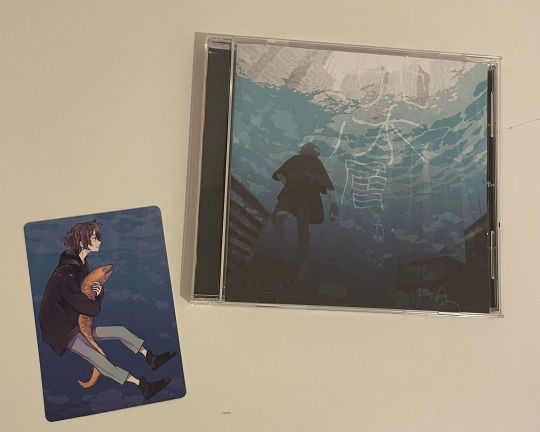
Moving on with books! I have the Zingai artbook which has concept art and storyboards of some MVs as well pretty art related to songs and a CD with lounge versions of some songs. The Adam by Eve artbook has interviews I can’t read and concept art for Bouto and Don’t Replay the Boredom
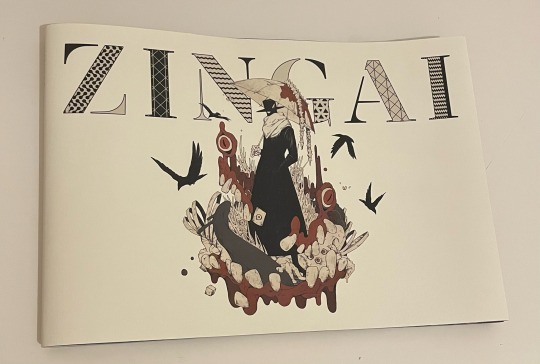

Poster…I framed it
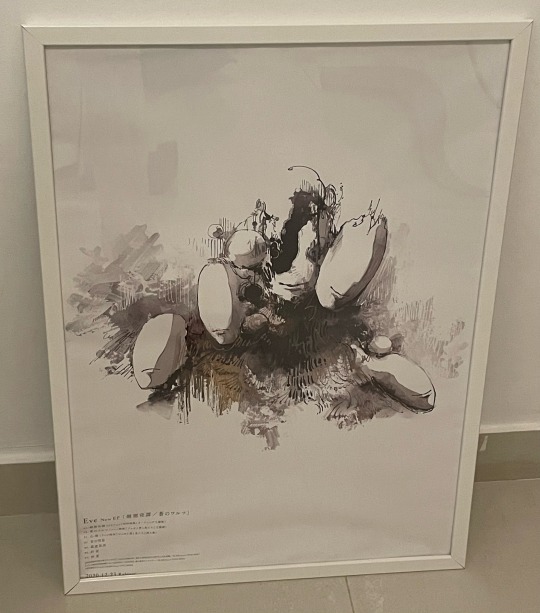
Last but no least my army of plushies, the boys +hito and more Sou
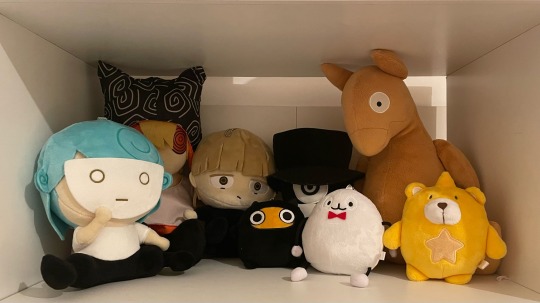

I also have another Sou album on the way!
Sorry if this was too long I finally saw an opportunity to show off my pride and joy tee hee
#answered ask#i love showing off merch ngl#tho you need to know all my money went down the drain for this
9 notes
·
View notes
Note
Hi! Can I ask what makes West End Games the "genesis point" of Star Wars old cnaon? Isn't it just the movies?
MY TIME HASCOME. Have a [tl;dr] of my notes on WEG.
Okay so - are the WEG games the genesis point of the old canon or is it the movies is the kind of question I’m not super interested in, so i’m more going to focus on what makes West End Games key, and the part they played.
Let’s dothe time warp – we’re in the mid-eighties, let’s say 86. Return of the Jedi was released in 83, the movies have been adaptedin as many forms as possible. There’s been children books, storybooks, activitybooks, nonfiction, etc. There’s been magazines and strip comics in newspapersand two trilogies of novels published by Bantam, plus Foster Splinter of theMind’s eye, there’s been Atari games and toys beyond counting. There’s been publishedscreenplays and artbooks, a Guide to the universe compiled by a fan andofficialized, some odds and ends I’m notcounting, and that list may seem long, but it’s ten yearsof content – the rate of release was nothing like today’s or the nineties’. Towrap it up, between 84 and 86, there’d been the Ewoks and Droidstv series, as well as the Ewok movies (I think a lot of kids loved them, but olderfans, not really) but the overall release rhythm was winding down: Kennerstopped producing SW figurines in 85 (they’d start again in 95); in 86 theMarvel run of comics ended (they published two spin-off series til 87, Droidsand Ewoks, tho). Star WarsInsider, still the Lucasfilm Fan Club Magazine at that point, would start its runin 87, but it featured little about SW for years - outside of themerchandising pages at least. Fandom was certainly active, but the rate of official content had dwindled next tonothing, and nothing new was on the horizon.
In myperiodization, that’s the end of the First Legends Era, and at this point SWwas basically dying, nevermind the Ewoks and Droids stuff. Again, I don’t meanthe core fandom, but without regular new content the wider audience was justlosing interest.
Somethingchanged that of course, otherwise I wouldn’t be here typing this, and somethingwas West End Games, a small company who, until then, had mostly publishedhistorical and fantasy RPGs. They could buy the license because… well, no onewas interested. Again, Star Wars had stopped being a hot property.
That didn’tlast long, and West End Games kicked off the Second Legends Era, expandingon the universe in a way none of the previous spin-off products had.
Their firstpublication was Star Wars: The Roleplaying Game in October 1987, covering thefirst movie’ events. It was followed a month later by a Sourcebook and until the license changed hands at the end of the nineties, WEG released over ahundred books, sourcebooks and miscellaneous stuff, including the Adventure Journal, which arguably kickedoff the long tradition of SW short stories that other official magazines wouldlater continue. Many of these first short stories were later reprinted, mainlyin the Tales anthologies - and a lot of people were angry when some of the Special Editions changes invalidated bits of these stories (the very first Canonpocalypse). The West EndGames material also started the tradition of in-universe works; most of theirguides and sourcebooks had in-universe passages, but some of the sourcebookswere fully written from an in-universe point of view.
There’s anumber of factors behind the success of the WEG Star Wars line; for thecore fandom, it came at a time when there was very little new content: WEG’s shortfictions were the only new fictional content (bar Ewoks/Droids stuff) from 86to 91, and with the Lucasfilm Fan Club Magazine, WEG was basically the only regularsource of content. It was also an encyclopedical exploration of the GFFA, more on that below. It was aninteractive kind of fictional content; a way to become an active participant in the galaxy-sized storyof Star Wars rather than remain a passive audience, more accessible thanthe electronic games of the times.
And it wasgood. Like, critically-acclaimed good.
The WestEnd Games publications had a hugeimpact on the franchise in their time, and their products remained being ratherinfluential in later years. They’re still being so, as that “roleplayinggame material published in the 1980s” alluded to in the 2014 Canonpocalyseannouncement – i.e., the source from which the Inquisitorium, the ISB andSiennar Fleet Systems, and a great many other elements since, were pulled andbrought to the NEU.
But to goback to your actual ask, there’sa reason for looking at the West End Games products specifically as a the base of the old Legends canon (and also a source ofelements and concepts for the NEU). The RPG outlook is a very specific one; oneof statistics and numbers and rules that users learn to navigate the setting ofthe adventures. To create a RPGfrom an already existing world,you’d define a number of categories and subcategories for worldbuildingelements, break down those elements to measurable characteristics – but alsoelaborate on context and fill in many blanks. It’s a very methodic way to doworldbuilding, one oriented towards a specific purpose.
Inpractice, that meant the West End Games books, although not planned as such,doubled as a set of incredibly detailed reference books, something without equivalent at the time. Althoughthe first publications centered around the movies and, once the ExpandedUniverse really took off in the early 90s, some of the novels, comics and games,the company had soon started to create as much as adapt, branching out to new,unexplored grounds. With the adventures came details about the galaxy’sgeography and history, its inhabitants and its technology, the inner workingsof the Empire and the Rebel Alliance. And if some of these publications tied tothe movies or other products, this was no-one way relationships: from theTarkin initiative to COMPNOR, the ISB or foundational texts such as the Declaration of Rebellion and otherelements great and small, the galaxy was laid out in West End Games’publications, comprehensively and extensively.
Thing is, if many of the books featured pre-written adventures or “adventure seeds”, the fundamental goal of sourcebooks and the overall worldbuilding of the WEG stuff was to create a universe for the players to tell stories – stories in which the narrator has no control over the characters, but stories nonetheless. In a way, the sourcebooks were reference books intended for storytellers.
Which is why they became the base of the “old canon”, when it took off in the early 90s, with the Dark Horse comics and Zahn’s Thrawn trilogy – and make no mistake, the only reason these happened at all was because WEG had made Star Wars a viable brand again. Their success had proven there was a market.
And as we’ve seen, they’d already done the worldbuilding, extensively; Lucasfilm has always had final approval on the WEG books too, so the content was considered as “official” as could be, and continuity already mattered (if always with the caveat that Lucas could invalidate it if he came back to SW, as finally happened). It’s well known Zahn was sent WEG sourcebooks by Lucasfilm (who would later develop an internal “canon bible,” way before the holocron database, but wasn’t there yet), and over the years, writers used the sourcebooks as resource materials; I wish I could give you a list but I’m working on it. Recently Jason Fry said he still used the sourcebooks. Hidalgo talks about them here and there.
Moreover, anumber of Legends (and NEU) writers, of fiction as well as of nonfiction, first contributed to StarWars through WEG; Troy Denning, later to write novels for the franchise,authored two “gamebooks,” i.e Choose your own adventure books, and a sourcebook;Bill Smith wrote and co-wrote a number of books for WEG before writing twotitles for the first series of Essential Guides ; Daniel Wallace alsowent from WEG to the Essential Guides, though he only contributed to thefinal published issue of the AdventureJournal, and the rest of his RPG writing was done in the context of Wizardsof the Coast publications. Peter M. Schweighofer, who would also go on to writefor WOTC, wrote or co-wrote a number of WEG books; he also edited the Adventure Journal and wrote a number ofshort stories. Pablo Hidalgo went from playing the WEG games to writing forthem before joining Lucasfilm. There’s more but I’m still working onthat list.
#star wars#meta#star wars history#west end games#canon#legends#my notes are way messy so this is messy too#anon#ask
23 notes
·
View notes